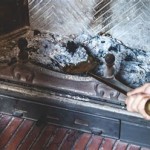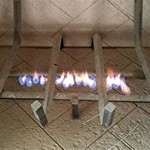Outdoor Masonry Fireplaces: A Comprehensive Guide
Outdoor masonry fireplaces represent a significant addition to any outdoor living space, offering warmth, ambiance, and a focal point for gatherings. They are more than just a functional element; they are an investment in lifestyle and property value. Understanding the various aspects of outdoor masonry fireplaces – from design and construction to maintenance and safety – is crucial for homeowners considering this enhancement.
The term "masonry" refers to construction using brick, stone, or concrete blocks held together with mortar. This construction method provides durability, heat retention, and a classic aesthetic. An outdoor masonry fireplace, therefore, is a permanent structure, unlike portable fire pits or chimineas. They are built to last, enduring the elements and providing years of enjoyment.
Choosing to install an outdoor masonry fireplace is a decision that requires careful planning and consideration. Factors such as local building codes, budget, available space, and desired aesthetic all play a critical role in the overall success of the project.
Design Considerations for Outdoor Masonry Fireplaces
The design of an outdoor masonry fireplace is not merely about aesthetics; it's about creating a functional and safe structure that complements the surrounding environment. Several key elements must be addressed during the design phase.
First and foremost is the location. The fireplace should be situated in an area that minimizes smoke impact on the house and neighbors. Prevailing winds should be taken into account. Clearance from flammable materials is also paramount. Local building codes typically specify minimum distances from structures, trees, and other combustible items. This is not merely a suggestion; it's a safety requirement enforced to prevent fires.
The type of masonry material used is another important design consideration. Brick offers a traditional and durable option, while stone provides a more natural and rustic look. Concrete blocks can be used as a base material and then faced with brick or stone veneers. The choice of material will impact the overall cost and aesthetic appeal. Consider the existing architectural style of the home and landscaping to ensure the fireplace integrates seamlessly.
The dimensions of the firebox are crucial for proper combustion and heat output. A firebox that is too small will restrict airflow, leading to smoky fires. A firebox that is too large may result in inefficient burning and excessive fuel consumption. The height of the chimney is equally important. An improperly sized chimney can also cause smoky fires and poor draft. A taller chimney will typically create a stronger draft, pulling smoke upwards and away from the seating area.
Finally, consider incorporating design features that enhance functionality and aesthetics. These might include built-in seating, wood storage, decorative mantels, or even an integrated outdoor kitchen area. Careful planning can transform an ordinary fireplace into a stunning outdoor entertainment area.
Construction and Installation Process
Building an outdoor masonry fireplace is a complex project best left to experienced professionals. It requires specialized knowledge of masonry techniques, structural engineering, and local building codes. Attempting a DIY project without the necessary expertise can lead to safety hazards and costly mistakes.
The construction process typically begins with excavating the foundation. The foundation must be strong and stable enough to support the weight of the fireplace. Concrete is typically used to create a solid base that extends below the frost line to prevent shifting due to freezing and thawing. Reinforcing bars are often embedded in the concrete to add strength and prevent cracking.
Once the foundation is in place, the masonry work begins. Bricks, stones, or concrete blocks are laid in courses, held together with mortar. The mortar joints must be properly filled to create a watertight seal and ensure structural integrity. The firebox is constructed with fire-resistant bricks or refractory materials that can withstand high temperatures. A smoke chamber is built above the firebox to collect and direct the smoke into the chimney.
The chimney is a critical component of the fireplace. It must be properly sized and constructed to create a strong draft and effectively vent smoke away from the seating area. The chimney typically extends several feet above the roofline to prevent downdrafts caused by surrounding structures or trees. A chimney cap is installed at the top of the chimney to prevent rain, snow, and debris from entering. It also helps to prevent animals from nesting inside.
During the construction process, it's essential to adhere to all local building codes and obtain the necessary permits. Inspections are typically required at various stages of the construction to ensure that the fireplace meets safety standards. Failure to comply with building codes can result in fines and delays.
After the masonry work is complete, the surrounding area can be landscaped to create a welcoming and aesthetically pleasing outdoor living space. This might include adding patios, walkways, outdoor furniture, and landscaping features. The goal is to create a cohesive and functional outdoor environment that complements the fireplace.
Maintenance and Safety Considerations for Outdoor Masonry Fireplaces
Proper maintenance and safety practices are crucial for ensuring the longevity and safe operation of an outdoor masonry fireplace. Neglecting these aspects can lead to costly repairs and potentially dangerous situations.
Regular cleaning is essential. Creosote, a flammable byproduct of burning wood, can accumulate in the chimney and firebox. Creosote buildup increases the risk of chimney fires. It is recommended to have the chimney inspected and cleaned annually by a qualified chimney sweep. The firebox should also be cleaned regularly to remove ashes and debris.
Inspect the fireplace regularly for cracks, loose bricks, or damaged mortar joints. These problems should be addressed promptly to prevent further deterioration. Small cracks can be repaired with mortar, while larger cracks may require more extensive masonry work. Ignoring these issues can compromise the structural integrity of the fireplace.
Use only seasoned firewood in the fireplace. Seasoned firewood has a lower moisture content than green firewood, which results in cleaner burning and less smoke. Avoid burning treated wood, painted wood, or other materials that can release harmful toxins into the air. Burning these materials can also damage the fireplace and create a fire hazard.
Never leave a fire unattended. Always supervise the fire and keep a close eye on children and pets. Keep a fire extinguisher or garden hose nearby in case of an emergency. Make sure everyone using the fireplace understands basic fire safety procedures.
Be aware of local burn bans and air quality regulations. Some areas may have restrictions on outdoor burning during certain times of the year due to dry conditions or poor air quality. Check with local authorities before starting a fire.
Ensure that the area around the fireplace is clear of flammable materials. Keep furniture, plants, and other combustible items at a safe distance from the fire. This will help to prevent accidental fires and injuries.
By following these maintenance and safety guidelines, homeowners can enjoy their outdoor masonry fireplace for many years to come while minimizing the risks of fire and other hazards. A well-maintained fireplace is a safe and enjoyable addition to any outdoor living space.
Ultimately, the decision to install and maintain an outdoor masonry fireplace should be approached with careful consideration of all aspects. The reward for such due diligence is a beautiful, functional, and safe outdoor space that enhances the home and provides a gathering place for years to come.

Outdoor Fireplaces Round Grove S

Stonetutorials Living Stone Masonry

Outdoor Fireplace Kits Masonry Stone

Outdoor Fireplace Kits Masonry Industries Inc

Outdoor Combo Fireplace And Oven Round Grove S

How To Build An Outdoor Stacked Stone Fireplace

Outdoor Stone Paver Firepits Fireplaces Installer Minneapolis St Paul

Outdoor Patio Fireplace Kitchen Furniture Stonewood S

Diy Outdoor Fireplace Kit Fremont Makes Hardscaping And Easy

Outdoor Stone Fireplace Landscaping Network








